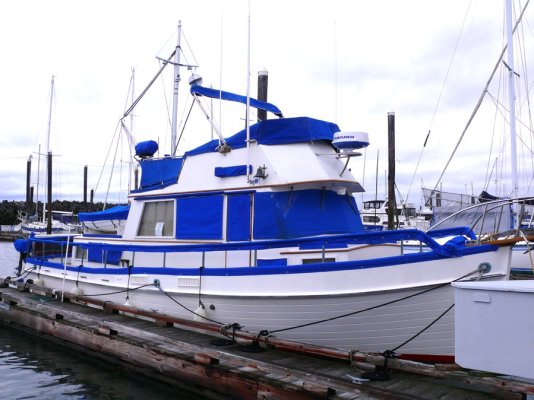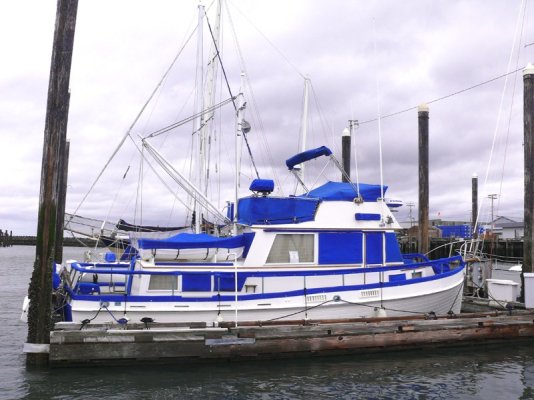There are several books out on making canvas items for boats. I don't recall any of the titles but I bought one for my wife, who does all our canvas work these days.* Try Amazon.com for canvas-making books.
My wife bought a huge Brother industrial sewing machine at a marine consignment shop the other year. This extended arm machine weighs about 90 pounds and is the first sewing machine I'd ever seen with its own lube oil sump. The motor, which is mounted under the table and is connected to the machine by a belt, weighs 110 pounds. I suspect this thing could sew plywood together if you had the right needle.
The most critical thing in making or repairing boat canvas is the thread. When canvas gives out it's usually not the fabric (assuming the fabric was good quality to begin with like Sunbrella) but the thread. The thread fails due to UV deterioration, salt, dirt, etc. Once a seam starts to go, the fabric can start flapping around and then it begins to tear and it's all over.
There is only one thread worth using in marine canvas work and that is Tenara which is made by Gore. It is currently the best thread in the world, resistant to sun, salt, abrasion, dirt, chemicals, you name it. It is used by all the best canvas fabricators, from marine to RV to patio to commercial items. Tenara is hellaciously expensive. We haven't priced it lately because we still have a lot of it left but when we bought ours a single bobbin of this stuff ranged from $200 to $500. At the time we bought ours it was available in only two colors, white and black. It requires a special tension setup on a sewing machine and specific sizes of needles. This information is called out on various websites that sell Tenara including Gore's own page about it.
We bought our boat almost twelve years ago. There were canvas covers for almost every piece of exterior teak on the boat. Some of them were newer than others, so I imagine the collection was the result of the last two previous owners. Some of the covers, particularly the large, two-piece flying bridge cover, were very old when we bought the boat. We keep our boat outside and our marina in the winter gets regular storms that can have gusts up to 80 mph although 50 and 60 mph are more common.** We did not expect the flying bridge cover to last more than a year or two longer, but here we are twelve years later and it's still intact. But ony due to my wife's diligence in repairing seams the moment they start to fail, or putting patches on the fabric where contact with something underneath has worn it thin.* We also keep the boat's stern to the prevailing wind which helps prevent the canvas from flapping up and down.
In addition to repairs, my wife has added all sorts of additional covers, like outboard motor, windlass, small window, barbecue, bimini, nameboard, etc. covers.
The attached photos are of our boat with all the covers in place. While it doesn't show, there is also a cover across the whole teak transom. The covers do an impressive job of lengthening the life of the brightwork finish. We use the boat year round--- in the winter we simply remove the window and name board covers and take the boat out as-is. To replace all this canvas with new would cost well over $10,000--- we've gotten estimates from marine canvas shops. So my wife's efforts are saving us a ton of money. We don't much care for the old-fashioned blue color, but that's what was on the boat when we got it so we've stayed with it for all the new canvas.
Marine canvas is very expensive if you have it made professionally.* Doing it yourself will save a lot of money, and keeping up with seam deterioration and replacing old thread with Tenara will save you even more money.


